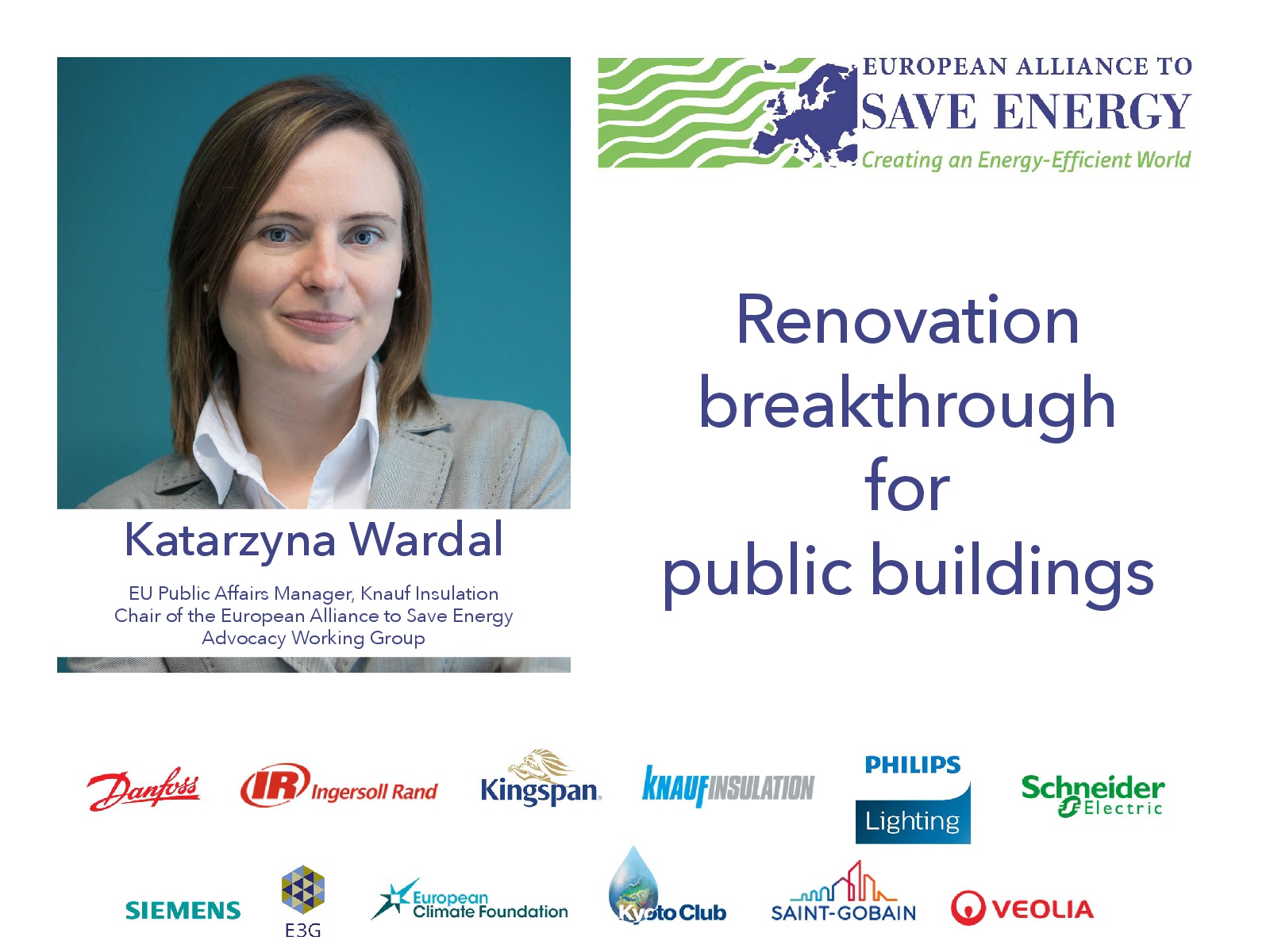
Katarzyna Wardal, Chair of the European Alliance to Save Energy Advocacy Working Group
Katarzyna Wardal is an EU Public Affairs Manager for Knauf Insulation and Knauf Group. Since January 2018, Katarzyna is chairing the Advocacy Working Group of the European Alliance to Save Energy (EU-ASE).
In her previous roles, Katarzyna worked for 5 years as a Policy Officer in the European Federation of Intelligent Energy Efficiency Services (EFIEES). Katarzyna has also worked for the European Commission’s Directorate-General for Energy.
When it comes to accounting for the finance of public buildings, the devil is always in the detail. It’s understandable. After all, these buildings are funded by public money — our money — so we expect highly rigorous standards.
Last week saw the publication of a document that upholds those standards and clarifies them — The Guide to the Statistical Treatment of Energy Performance Contracts by Eurostat, the Statistical Office of the European Commission and the European Investment Bank. It is a lengthy title that, in short, helps everyone easily navigate complicated accounting rules that govern private investments in energy efficiency measures in the public sector.
The Guide follows the Eurostat Guidance note on the revised treatment of Energy Performance Contracts in government accounts, issued in September 2017. And it is hugely important, because before the guidance note, that devilish detail stood in the way of energy efficient renovation and prevented the saving of billions of euros in energy bills in public buildings (as well as blocking major reductions in their carbon footprint).
This was why. Energy Performance Contracts or EPCs as they are known, should be a win-win. Private companies finance, carry out, and guarantee energy efficient renovation and the work is paid for by the savings generated by reduced energy bills. In return, the local authority gets a comfortable, energy efficient, more environmentally-friendly building.
However, even though private companies were picking up the bill, when authorities recorded the investment it had to be counted towards debt on their balance sheets. And no authority likes to increase public debt — particularly if they are being watched closely by budget-conscious politicians in a time of austerity.
The publication of the new guide is a major breakthrough because it clarifies exactly how EPCs should be accounted for to the benefit of everyone involved.
According to the Commission, the guidance note “significantly increases the possibilities for public bodies to use EPC contracts, by including and clarifying the circumstances in which these contacts can be recorded off government balance sheets”.
In practical terms, the guidance note clarifies accounting procedures for EPCs — which can come in a wide variety of forms – and also unlocks money for energy efficient renovation from financial institutions including from the European Investment Bank (EIB) and facilitates getting technical and advisory support from the European Investment Advisory Hub.
The guidance note is a massive step forward, but there is now a lot of work to be done to realise its enormous potential for more energy efficient public buildings. The members of the European Alliance to Save Energy look forward to working with the EIB and local authorities to ensure that contracts are structured to ensure the maximum possible reach of energy efficient renovation across Europe.
